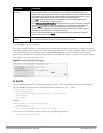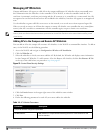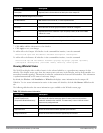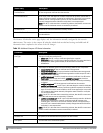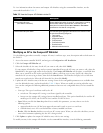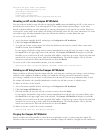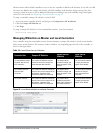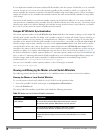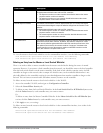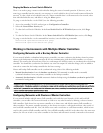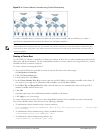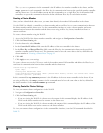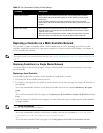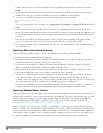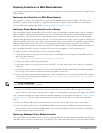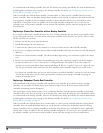
Data Column Description
For deployments with both master and local Dell controllers:
l The sequence number on a master controller should be the same as the remote
sequence number on the local controller.
l The sequence number on a local controller should be the same as the remote
sequence number on the master controller.
Remote Sequence Number The number of times that the controller whose WebUI you are currently viewing has
received and acknowledged a campus AP whitelist change from the controller in the
whitelist.
For deployments with both master and local Dell controllers:
l The remote sequence number on a master controller should be the same as the
sequence number on the local controller.
l The remote sequence number on a local controller should be the same as the
sequence number on the master controller.
Null Update Count The number of times the controller checked its campus AP whitelist and found nothing to
synchronize with the other controller. By default, the controller compares its control
plane security whitelist against whitelists on other Dell controllers two minutes. If the
null update count reaches 5, the controller sends an “empty sync” heartbeat to the
remote controller to ensure the sequence numbers on both Dell controllers are the
same, then reset the null update count to zero.
To view the master or local switch whitelists via the command-line interface, issue the following commands:
show whitelist-db cpsec-master-switch-list [mac-address <mac-address>]
show whitelist-db cpsec-local-switch-list [mac-address <mac-address>]
Deleting an Entry from the Master or Local Switch Whitelist
There is no need to delete a master controller from the master switch whitelist during the course of normal
operation. However, if you remove a local controller from the network, you should also remove the local controller
from the local switch whitelist on the master controller. If the local switch whitelist contains entries for Dell
controllers no longer on the network, then a campus AP whitelist entry can be marked for deletion but is not
physically deleted, as the controlleris waiting for an acknowledgement from another controller no longer on the
network. This can increase network traffic and reduce memory resources on the controller.
To delete an entry from the master or local switch whitelist via the WebUI:
1. Access the controller’s WebUI, and navigate to Configuration>Controller.
2. Select the Control Plane Security tab.
3. To delete an entry from the Local Switch Whitelist: In the Local Switch List For AP Whitelist Sync section,
click the Delete button by each controller entry you want to remove.
Or,
To delete an entry from the Master Controller Whitelist: In the Master Switch List For AP Whitelist Sync
section, click the Delete button by each controller entry you want to remove.
4. Click Apply to save you settings.
To delete an entry from the master or local switch whitelist via the command-line interface, issue either of the
following commands:
whitelist-db cpsec-master-switch-list del mac-address <mac-address>
whitelist-db cpsec-local-switch-list del mac-address <mac-address>
DellPowerConnectW-SeriesArubaOS6.2 | User Guide ControlPlane Security | 89



